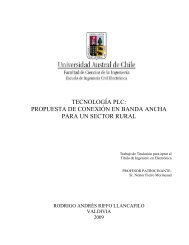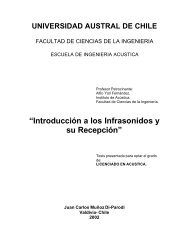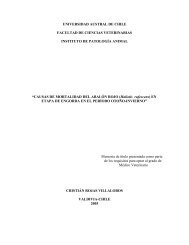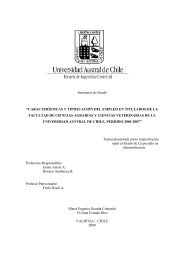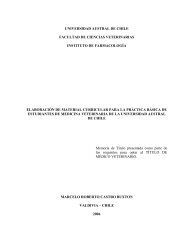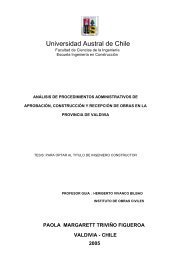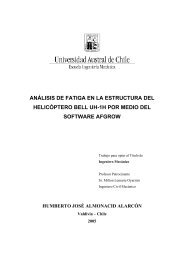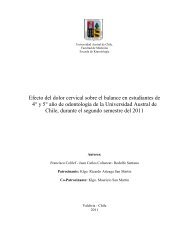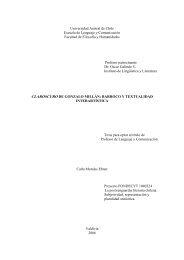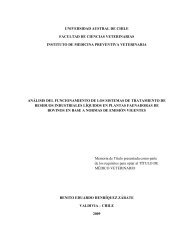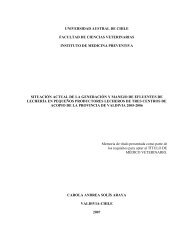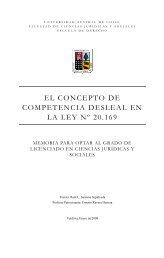Diversidad y control biológico de insectos - CyberTesis UACh ...
Diversidad y control biológico de insectos - CyberTesis UACh ...
Diversidad y control biológico de insectos - CyberTesis UACh ...
You also want an ePaper? Increase the reach of your titles
YUMPU automatically turns print PDFs into web optimized ePapers that Google loves.
The pairwise genetic distance matrixes were calculated using the Arlequin 3.01 software<br />
package (Schnei<strong>de</strong>r et al., 2000) to additionally compare the putative populations.<br />
Results.<br />
Phylogenetic analyses.<br />
The neighbour-joining (NJ), maximum parsimony (MP) and minimum evolution (ME)<br />
trees showed no major differences on the inferred phylogenies and consequently only the<br />
NJ tree is shown in Figure 1. The only relevant difference between trees was the sister<br />
position of the isolate B900 (haplotype 11). The branching pattern suggests a <strong>de</strong>ep division<br />
for the B. bassiana s.l. in Chile. The two large clusters inclu<strong>de</strong> some smaller but well<br />
supported clusters. When the phylogenetic and geographic data were crossed (Figure 1), the<br />
phylogenetic relatedness between isolates did not agree with their geographic relatedness,<br />
except for a small cluster which exclusively comprised isolates collected at Eastern Island.<br />
As expected, the haplotype tree shows a con<strong>de</strong>nsed sight of the findings (Figure 2).<br />
The Figure 3 shows the haplotype network constructed from the most parsimonous trees<br />
supported by the dataset. Remarkly, the network grouped the haplotypes into two large<br />
clusters, with the haplotype 11 in a intermediate position. The most exten<strong>de</strong>d haplotype<br />
(H1) has not a interior position in the network as expected if this haplotype was the<br />
ancestral state.<br />
The segment had a nucleoti<strong>de</strong> composition of A=0.24, C=0.28, G=0.27 and T=0.21, with<br />
G+C content = 55%. The 97 sequences gave 20 different haplotypes, which inclu<strong>de</strong>d 282<br />
variable (19%) and 218 parsimony informative (15%) sites. The overall nucleoti<strong>de</strong><br />
diversity was 0.035.<br />
Demographic analyses.<br />
The mismatch distributions for all pairwise combinations of the individuals for each<br />
population are shown in the Figure 4, except for Tarapacá, which was revealed fixed for the<br />
haplotype 1 and consequently the mismatch distribution can not be calculated. All the six<br />
populations had bimodal or multimodal distributions which did not conformed to the<br />
expected distribution from a mo<strong>de</strong>l of constant growth population expansion.<br />
25



